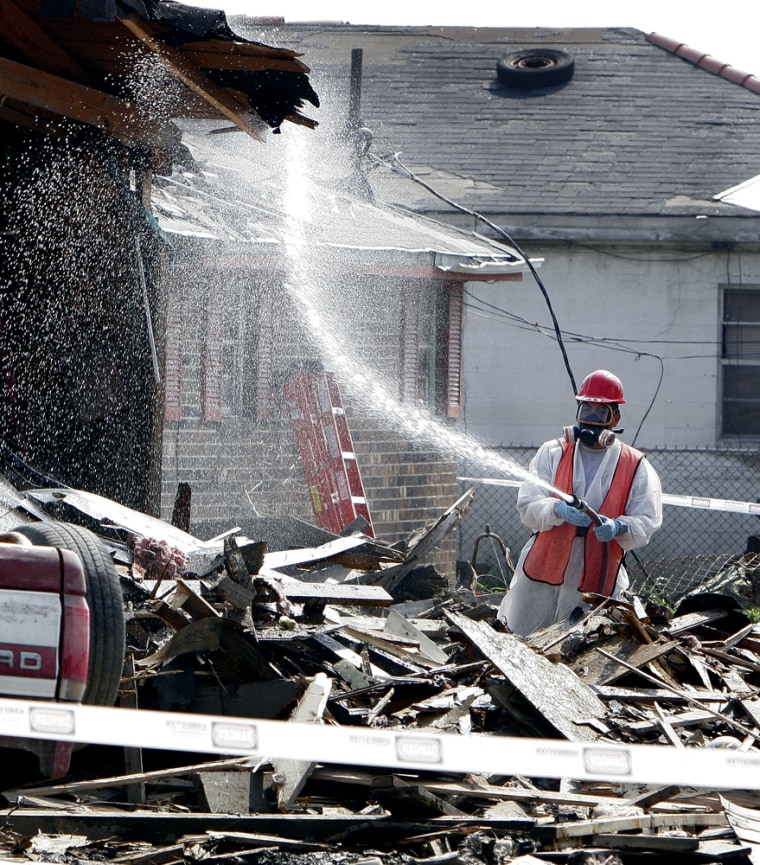A full recovery in New Orleans could take 25 years as homeowners, businesses and tourists are coaxed back to the city devastated by Hurricane Katrina, the Bush administration’s Gulf Coast recovery coordinator said Thursday.
In an interview with The Associated Press, Don Powell said that much of the city’s rebirth will hinge on factors he said were “out of our control,” including restoring housing, ensuring safety and encouraging robust investment by the private sector.
“We kind of want it to happen overnight, or I do, but it’s going to take some time,” Powell said. “This could be five to 25 years for it all to fit into place.”
Powell also said the Army Corps of Engineers now estimates it will cost an additional $5.9 billion to repair levees enough to fully protect and insure nearly 1.1 million residents of the greater New Orleans area.
That is in addition to the $3.5 billion the Bush administration has so far sought to bring the levees back to at least their pre-Katrina levels by June 1, the start of the 2006 hurricane season.
Powell said the Corps recently told him the administration must commit to spending as much as $5.9 billion more before it could fully certify the levees, as needed to issue flood maps that determine insurance rates and allow rebuilding to begin.
Powell said he does not know how many more federal dollars Washington will commit to the region, or whether some of the money will come from state and local governments. “We haven’t decided what to ask for,” Powell said.
But he said that decision and the release of new flood maps would likely happen in a “relatively short period of time — in a matter of days.”
Strengthening levees over the next two months
Over the next 60 days, Powell said, the Corps will be strengthening levees and building storm-proof pumping stations and flood gates to close certain parts of New Orleans’ canals in the event of a major storm.
“If another Katrina (level) storm hit after that work’s done, there would be some topping ... but the flooding would be all manageable,” Powell said. “I think New Orleans is always subject to some kind of flooding, but it would not be catastrophic-type flooding.”
In Baton Rouge, Louisiana Gov. Kathleen Blanco called the nearly tripling of the estimated cost of levee repairs “an outrage.” She demanded that Congress come up with the money. She said the $3.5 billion investment so far has focused primarily on rebuilding the flood protection on the east bank of New Orleans.
Without the additional cash, Blanco said, the Lower Ninth Ward and St. Bernard and Plaquemines parishes likely wouldn’t receive the levee repairs needed to give them the protection they had before Katrina.
“Obviously all sections will not be secure,” she said.
$19 billion in funds pending
The White House so far has asked for $108 billion in Gulf Coast relief and recovery aid, all but $19 billion of which has been approved by Congress. The remainder is under consideration by lawmakers. The new levee costs are not included in that spending pot, Powell said.
In a conference call with reporters later, Army Corps of Engineers Maj. Gen. Don Riley said the new costs are the result of ongoing repairs and studies of the levees.
“As we learn, we will adjust our methodology and our estimate,” Riley said. “To do it properly, it takes time. Our main interest is in getting this right for the people of New Orleans.”
What the storm-ravaged region will look like in upcoming years is largely up to state and local officials, Powell said, though the U.S. Department of Housing and Urban Development will have authority to “tweak” some of the housing plans.
The four parishes that make up New Orleans and its immediate suburbs have been waiting for the Federal Emergency Management Agency to issue the flood maps for months.
